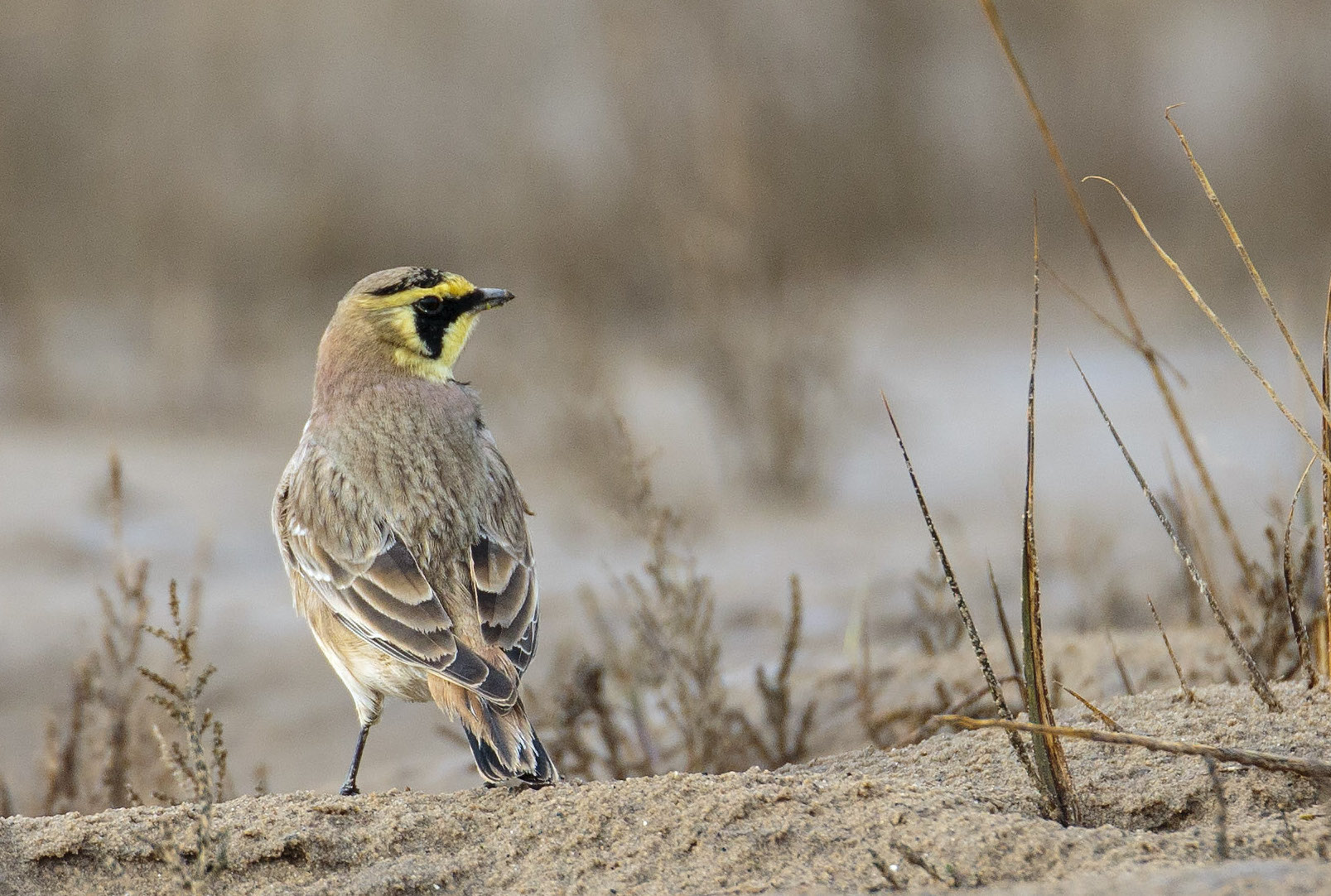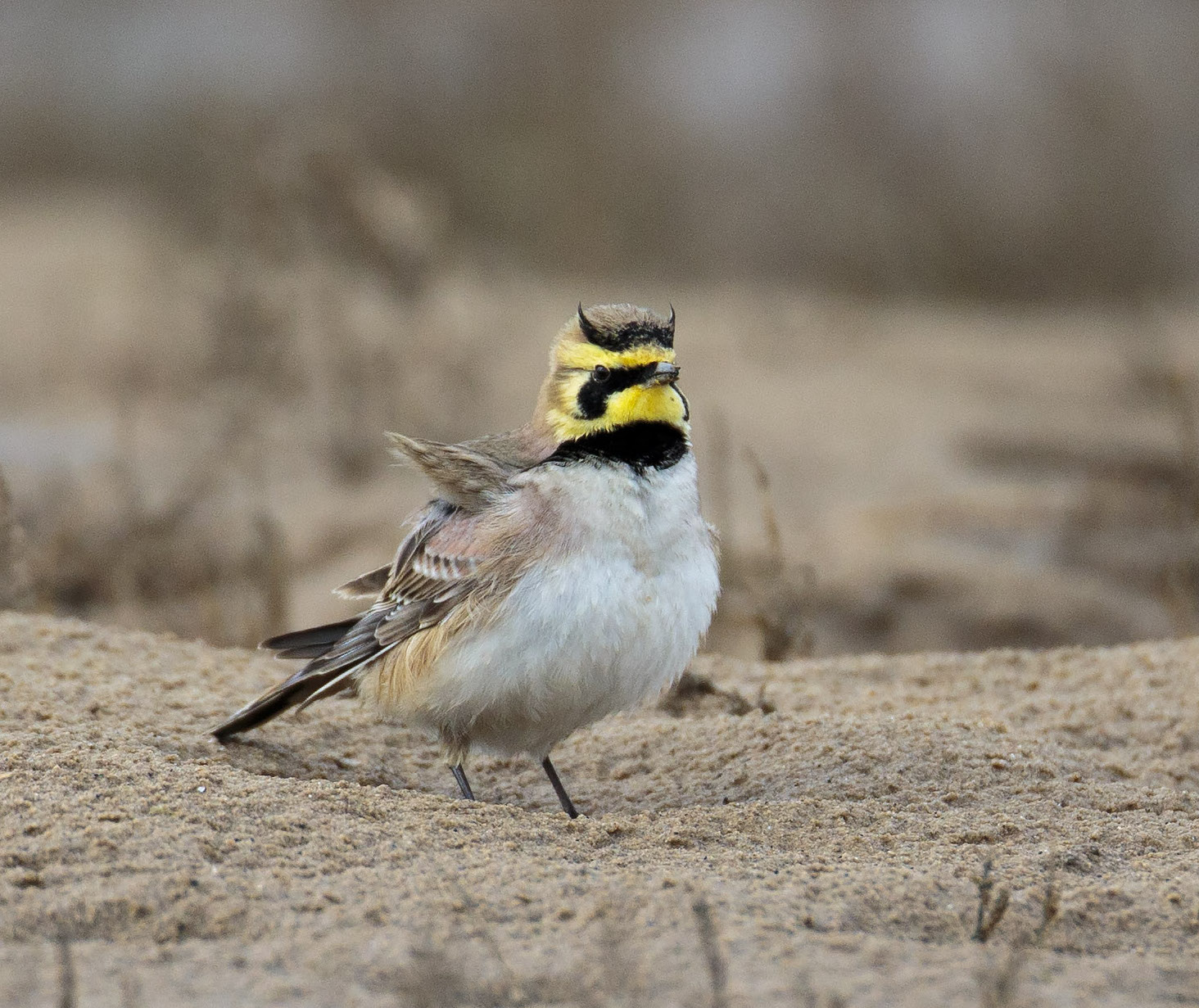Shore Lark Eremophila alpestris
Scarce, formerly fairly common winter visitor. Currently low numbers compared to the 1960s and 1970s. Exceptional inland.


Lorand and Atkin (1989) reported that Shore Larks were rare and irregular visitors to Lincolnshire from the first in 1837, which was the second for Britain at the time, until the late 1940s when they began wintering regularly in the county. The Atlas reports that numbers were high from the mid 1960s to the mid 1970s with flocks of over 100 in several years. There was then a steady decline to zero by the end of the 1980s, after when numbers began to steadily increase again. In the late 1990s sizeable flocks were occurring at several of the regular coastal sites. In 1996, at Gibraltar Point numbers increased from 20 in October to 41 in November and 71 in December, when 20 were also at Donna Noook. Similarly in 1998 48 were at Gibraltar Point in November, with 88 there in December. In 1999 50-70 were at Gibraltar Point January-March, peaking at 80 February 21st. Since then, such numbers have become a distant memory and in the 10 years to 2018 LBR shows that the total of peak annual site counts ranged from a low of six in 2015 to a high of 51 in 2016 with an average of around 27 birds per year. Three sites held 90% of the birds. These were Brickyard Lane, Theddlethorpe with summed peaks across 10 years of 103, Donna Nook with 77 and Gibraltar Point with 69. Nine other sites held 25, all on the North Sea coast between Cleethorpes and Gibraltar Point apart from singles at Frampton Marsh and Covenham Reservoir. The only flocks of more than 20 were at Brickyard Lane with 28, October 24th, 2016 and 24 on November 11th 2018; Gibraltar Point with 26 on April 16th 2011 and 21 on December 19th 2010; and Donna Nook with 22 on February 4th, 2017.
(Account as per new Birds of Lincolnshire (2021), included October 2022)
